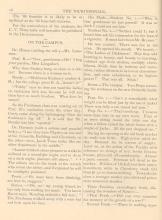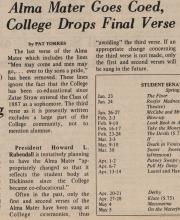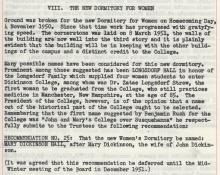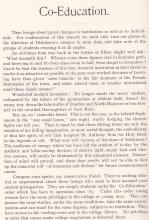Dickinson College Faculty Adjust to Female Students in their Classes
In October of 1884, The Dickinsonian published their first issue following the institution of coeducation. The "Locals" section includes an instance in which a professor forgot that he had female students in his class. The excerpt reads, "Prof. R.-- 'Now gentlemen--Oh! I beg your pardon, Miss Longsdorff.'" Zatae Longsdorff, the female student mentioned in this peice, was the first woman to graduate from Dickinson College.





